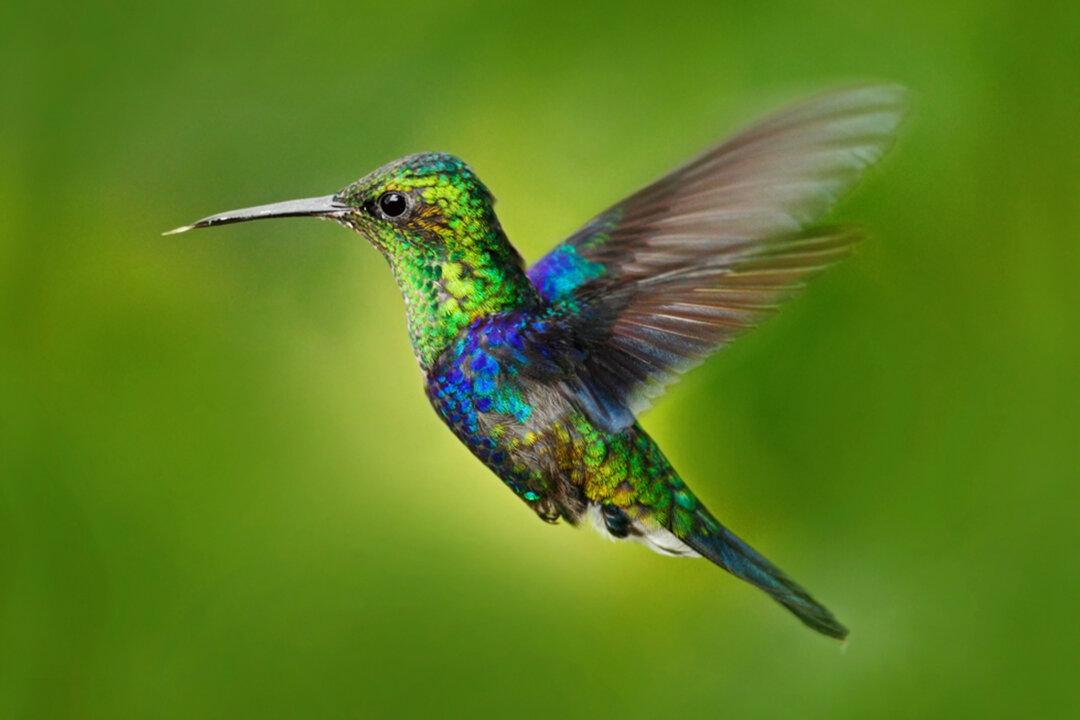One little bird is standing out from the over-300 species of hummingbird that exist on planet Earth for a dazzling feature: its iridescent bright blue and green plumage that looks like a cloak made of sequins. This tiny jewel seems like it’s flown straight out of the pages of a fairytale.
The male crowned woodnymph (Thalurania colombica) wears bright green on its head, throat, and breast. The rest of its body is colored in a shimmering deep blue, with a dark blue forked tail.





